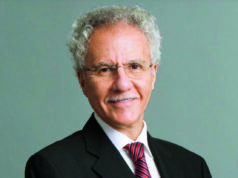
Dawn M. Coleman, MD, chief of vascular surgery at the Duke University School of Medicine in Durham, North Carolina, focused on the likely major shortage of vascular surgeons and physicians to illustrate how intersocietal collaboration will help ease this problem during a special session at the 2024 Society for Clinical Vascular Surgery Annual Symposium in Scottsdale, Arizona (March 16–20).
“I think there are three big benefits to intersocietal collaboration,” said Coleman, representing an Association of Program Directors in Vascular Surgery (APDVS) perspective during the breakout focused on private practice and collaboration across societies. “One, it helps our workforce. Two, it helps our workforce. And three, it helps our workforce.”
Not only does collaboration help ease the gaps in coverage that patients currently deal with, but it also relieves some issues that will hit the healthcare system in the near future, she explained. “There is a projected physician shortage by 2034 that could be anywhere from 37,000 to 124,000 doctors—dependent on how things are modeled,” Coleman told the audience.
Some of the biggest factors around this potential doctor shortage is “an aging workforce and a lot of the burnout that physicians across the board are feeling,” she stated.
The data Coleman referenced illustrate a real problem for the future that will most likely affect those in rural and urban populations, where vascular surgeons are few and far between. She said that, with the population expected to grow 10% by 2034, population growth will likely surpass physician capacity.
“By population density, we see pretty egregious disparities in urban and rural settings,” Coleman said. “We can’t ignore those data.”
Coleman mentioned some high-level policy changes, including the Consolidated Appropriations Act, the Conrad State 30 program, and the Resident Physician Shortage Reduction Act.
“The Consolidated Appropriations Act created 1,000 new Medicare-supported GME [Graduate Medical Eduction] positions for rural hospitals specifically in 2021. The Conrad State 30 and Physician Reauthorization Act passed in 2021 are allowing us to extend J1 visa holders,” Coleman explained. “Finally, the Resident Physician Shortage Reduction Act passed. That’s going to essentially increase the number of training programs by 14,000 over seven years.”
While those are all great steps in the process of filling coverage gaps, there is still a lot of work to do, Coleman continued. Having more physicians on the frontlines will certainly help, although those physicians need to be spread across the country instead of being focused in high-density areas, she said.
“When we think about volume, [we are] not just addressing disparities in patient access to care,” Coleman expanded. “By recruiting and training more vascular surgeons, it helps us to potentially uniquely position vascular surgeons in underserved spaces. We’ve got just over 3,000 vascular surgeons serving 214 million people. There are 2,600 counties that don’t have one. That leaves 96 million U.S. patients without service.”
With so many patients currently without service, and the likelihood of the population continuing to rise, the potential benefits of intersocietal collaboration are numerous, Coleman added. “I think it’s important that we continue to expand community independent vascular surgeon fellowships and expand exposure of our learners at all levels,” Coleman said in her closing remarks. “We have got to do better at optimizing local and regional networking and partnerships.”












